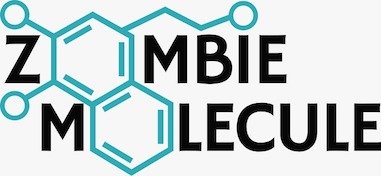
MONITORING EPINEPHRINE USAGE
APP AND SERVICE
MVP
CHALLENGE
Leading allergy pharmaceutical manufacturer saving over 5000 lives, knew it had to reduce the risk of allergists experiencing anaphylaxis and looked to digital health.
With high manufacturing costs, co-founders did not know how to leverage data to reduce costs.
Clients knew that users had technology needs with mobile-first solutions.
Length of Project - 15 months, UX and Service Design effort - 11 weeks
APPROACH
Working with the client as the Design lead, I collaborated and co-designed with team colleagues to turn human factors research into key journeys, shape the service offering for an MVS launch, the user experience, and the first generation of an app - the gateway to the service.
Took synthesised findings from Human Factors experts to rapidly assess and identify patient and care provider journeys.
Used commercial levers in digital healthcare to re-imagine operational processes.
Defined the MVS and app using agile methods with cloud architects, front-end engineers and industrial designers.
OUTCOME
Coached the VP of Product Innovation to integrate agile product development.
Implemented the organisations first AI digital health service with 138 clinical trials.
MVS unlocked insights around 'in-market' FDA approved physical device experience,
Introduced real-time connectivity via a mobile phone over bluetooth, improving emergency response rates of anaphylaxis by 2 minutes.
LIVING IN THE SHOES OF ALLERGISTS
With the human factors team we visited 14 caregivers and 20 allergists discovering how they managed allergies and epinephrine dose delivery during an anaphylaxis episode. Findings challenged the clients original brief, and I developed research outputs to steer their thinking in a service value proposition workshop.
Current behaviours and cognitive walkthroughs observed.
“I’ve just got so many around the house, high school and with relatives. I’d love to tell you when each [epinephrine device] is going to expire, but I just have no idea. If Jake has a reaction (you never know) and [epinephrine device] is not in date, things start getting serious quick!”
Organisational DESIGN - STakeholders and jobs-to-be-done
My job in the workshop was to identify what was not in the client brief and put into the VP of Product Innovation head allergists and caregivers unmet needs, and the organisational changes potentially required. Through role play, drawing out stakeholder roles and responsibilities and the 'jobs-that-needed-to-be done', I drew out four key user journeys with the client where we then determined what experiments needed to be conducted to understand the reality of the workplace and how allergists and caregivers would respond when the service went live.
Journey mapping encounters with each stakeholder
THE OFFERING - REDUCE 'LIVING IN FEAR' NEEDS
The goal of the service was to create a fast, lightweight MVP that would add value to allergists, caregivers and the client. It needed to demonstrate how 'living in fear' with allergies could be reduced. The offering - Caregiver Managing Adolescent Allergist: focused on providing real-time data where AI/ML learnt how an allergist was using their epinephrine injector and managing their diet. The gateway to this information was an app, sending allergy information to friends and family, allergy event notification, and personalising notifications around the life of the physical epinephrine device.
Trigger Map of service offering and visualising high level cloud-based ecosystem
DEFINING AND TESTING THE APP
A design space was set up where we used a blueprint of the service to understand what operations currently exist and would need to exist when the app was introduced into the market. I ran a two week design sprint for concept development with daily design review sessions, where a number of alternative app designs were looked at by the team. We conducted a formative FDA study with 50 caregivers and 22 adolescents to learn about what behaviours 'hooked' them to the new service. Usability findings determined that logging allergy event detection was key, and after several iterations of further user testing the app, I fleshed out the layout and overall hierarchical feel into wireframes.
App user process flow design - including very low fidelity initial wireframes
App high-fidelity wireframes
TESTING AI DESIGN WITH GDPR
I created interactive prototypes of the app visualising to the VP of Product Innovation the experience to approve or remove features. This was particularly useful for testing and communicating deeper issues. In particular, caregivers and allergists thought the app was a replacement of the current physical device and not a service, and a SaaS prototype using AI algorithms to feedback to caregivers saw data being used without consent. These were huge issues and we had to iterate the design direction to the point where trust was being established.
Examples of prototyping interactions with the service
“I used to be scared of knowing where I put my [epinephrine device]. With this new app I can find it’s location straight away.”
EXTENDING THE BRAND TO DIGITAL
The client did not have a digital brand strategy. With an industrial designer we developed 'look and feel' concepts based on user research findings, where the digital experience needed to be an integral part of a caregivers and allergists life.
Alternative digital brand designs proposed to the client
PREPARING MVP FOR CLINICAL TESTING
Additional formative usability studies were conducted with real caregivers and their adolescents around various concepts, and final iterations were handed off to a third-party cloud platform and mobile app developer to build an operational digital service. A natural usability test will commence at the end of 2018 ready for FDA to 'go-to-market'.





















